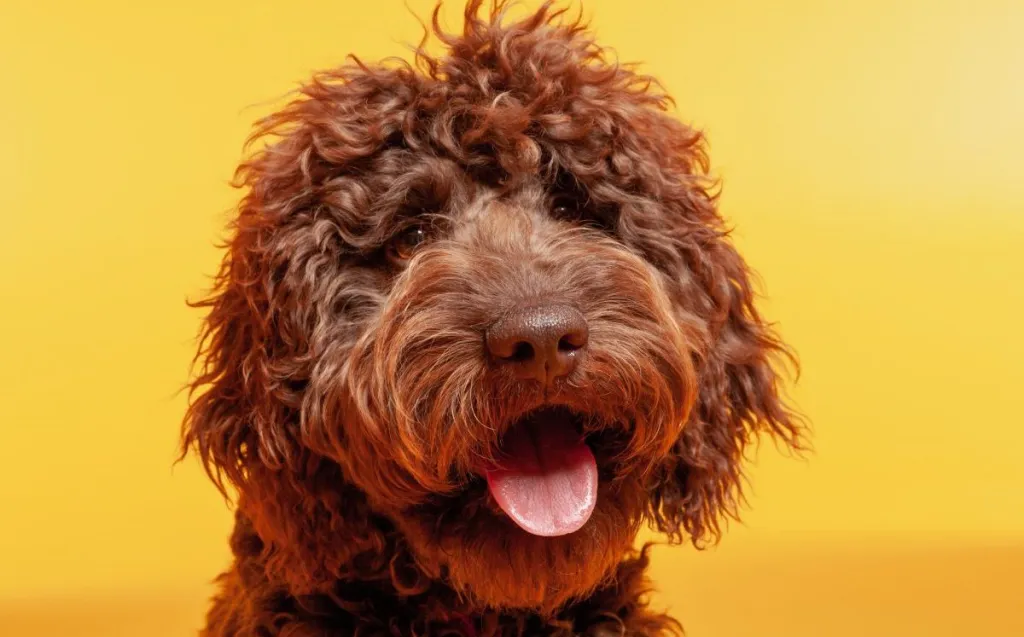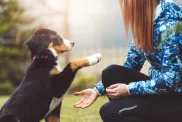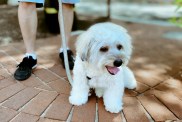It’s not surprising that the Labradoodle has gained such popularity so quickly. Originally developed to be hypoallergenic guide dogs, the first planned crosses of Poodles and Labrador Retrievers were arranged by the Royal Guide Dogs Association of Australia.
The result was a Labradoodle – a smart and sociable dog who not only possessed a nature appropriate for guide dogs but also had a low-shedding coat. While the hybrid is not yet achieving consistent results in coat or temperament, they’re wildly popular and affectionate dogs. They are referred to in Australia as “Cobberdogs.”
The popularity of Labradoodles has been increasing in recent years since the rise of social media. In 2020, they were the 7th most popular dog breed in the United States. This is likely due to their combination of desirable traits, such as their hypoallergenic coat, friendly temperament, and versatility.
Quick Facts
- Origin: Australia. The Labradoodle was initially developed in Australia in the 1980s as a cross between a Labrador Retriever and a Poodle. The goal was to create a hypoallergenic guide dog for people with allergies.
- Size: Medium to Large
- Breed Group: Hybrid (Designer)
- Lifespan: 10 to 15 years
- Coat: Can vary (curly, wavy, or straight), usually low shedding
- Temperament: Labradoodle are friendly, intelligent, and social. Their intelligence makes them quick learners, and their affable nature makes them suitable as therapy and assistance dogs.
- Exercise Needs: Moderate to High. Regular walks, playtime, and mental stimulation are important to keep them happy and healthy. They often enjoy activities such as fetch, agility, and swimming.
- Training: Highly trainable, often excels in obedience. Consistent, positive reinforcement methods work well with this breed.
- Grooming: Regular grooming needed to prevent matting.
- Health: Some breed-specific concerns, such as hip dysplasia and eye issues.
- In 2023, a 6-year-old Labradoodle named Kiera was honored with a “Dogtorate” degree from the University of Maryland for her service in comforting health care workers.
Like most hybrid dogs, Labradoodles end up in shelters or rescues. If you want to bring one of these loving, faithful, and adorable dogs into your home, then make sure you opt to adopt if you can!
Labradoodle Pictures
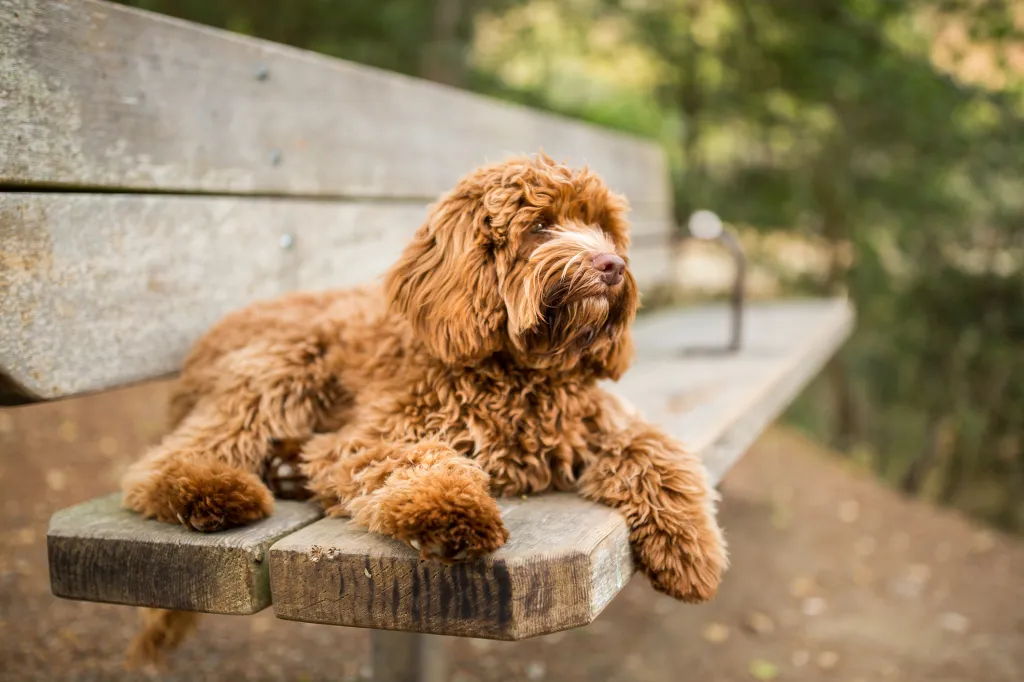
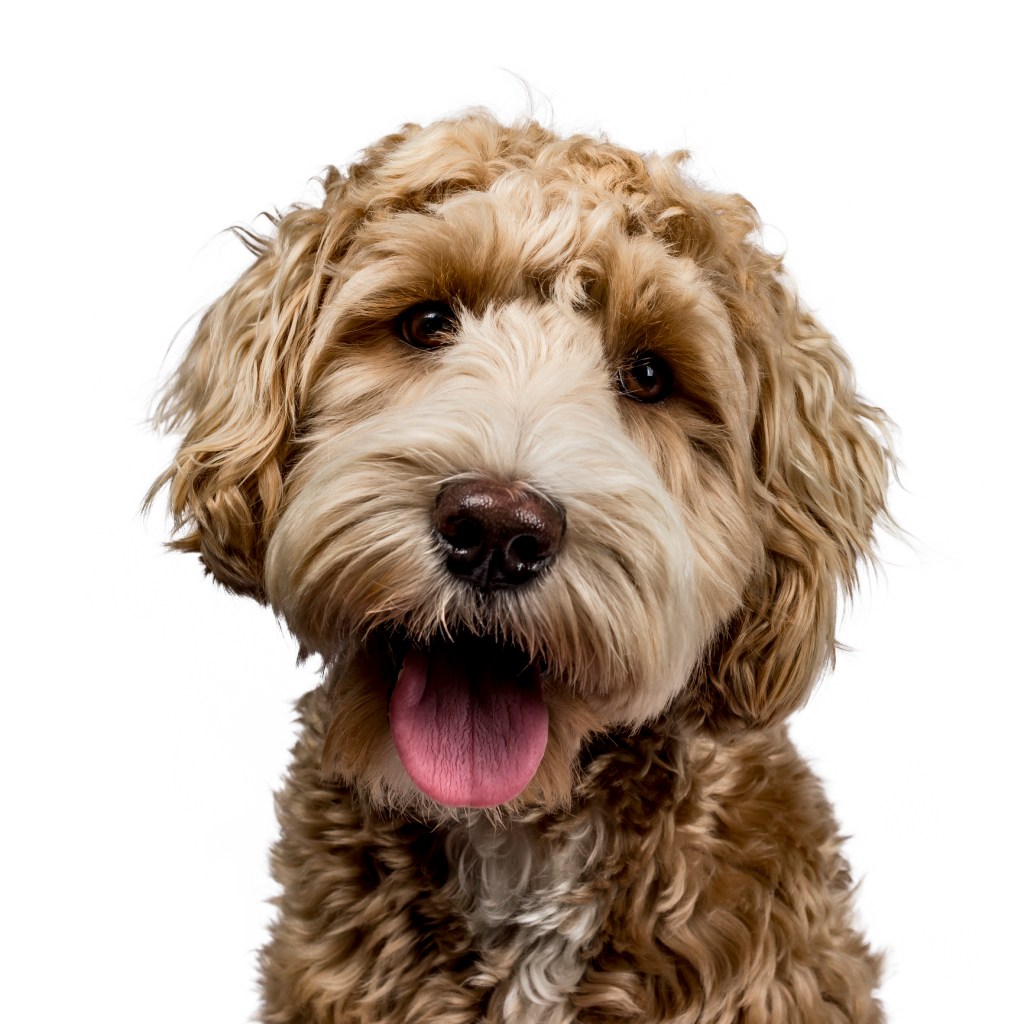
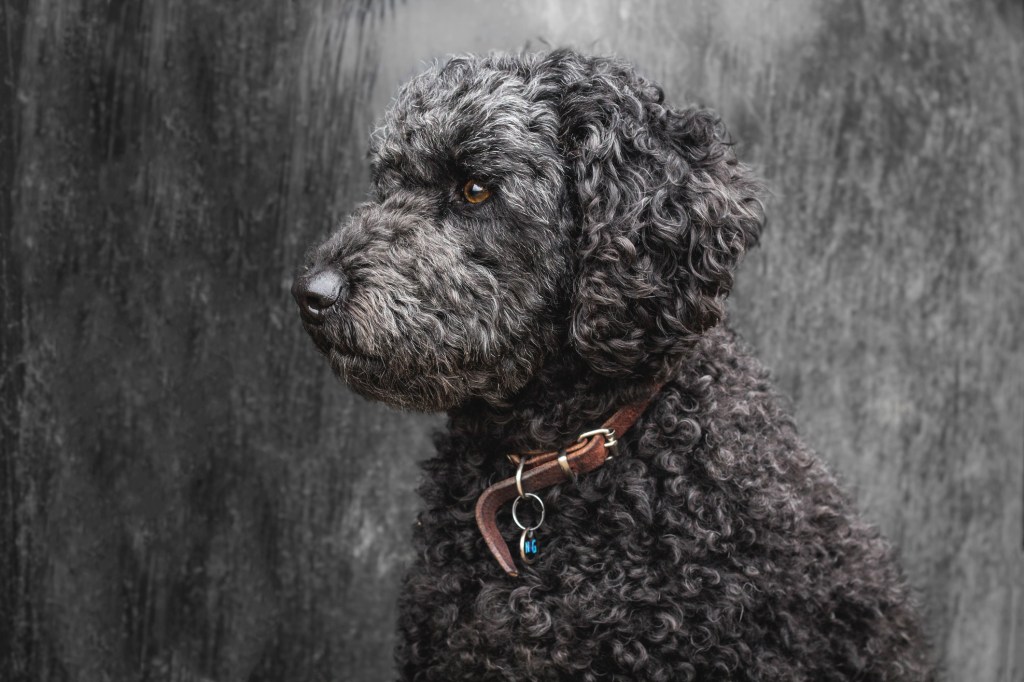
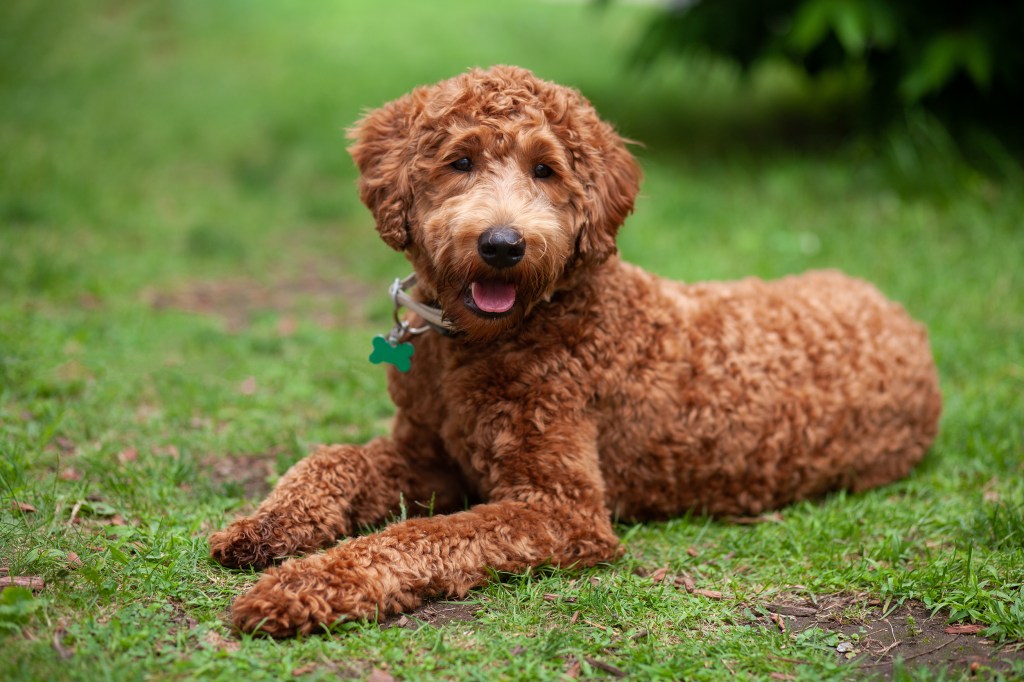
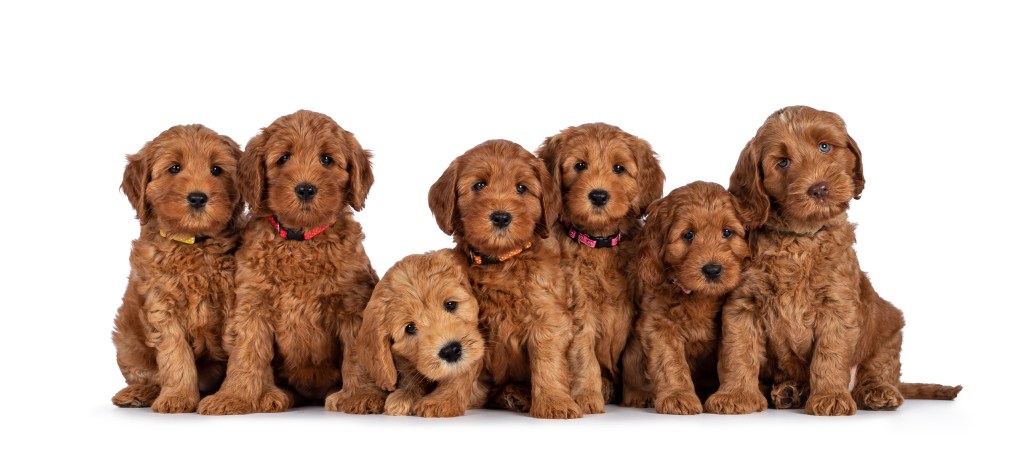
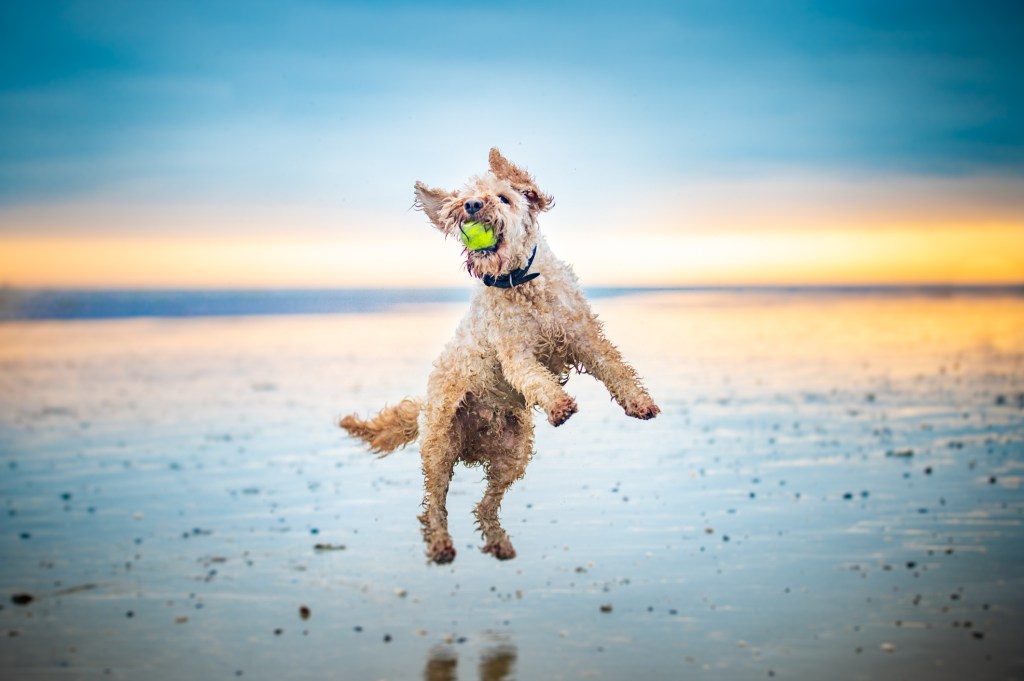
Adaptability
-
Adapts Well To Apartment Living
Looking for the best dog for your apartment? Contrary to popular belief, the suitability of dogs who adapt well to apartment living goes beyond its size. Apartment dwellers have a myriad of dog breeds to choose from as potential companions, with various factors to consider. Some large breeds can adapt well to apartment living and have lower activity levels. Others may require more space and possess higher energy levels. On the other hand, certain small dog breeds with abundant energy can still find contentment with indoor playtime or brisk walks.
However, when selecting a dog that adapts well apartments, it is essential to prioritize your neighbors. Opting for a pet that doesn’t excessively bark and behaves politely when encountering others in shared spaces like is crucial for maintaining a harmonious apartment environment.
In high-rise settings, it’s worth noting that numerous small dogs may exhibit a propensity for high energy and frequent barking. This makes them less suitable for apartment living. Therefore, desirable qualities in an apartment dog encompass being quiet, low-energy, and displaying polite behavior towards other residents.
Factors To Consider When Choosing A Dog For An Apartment
When considering dogs that adapt well to apartments, size alone should not be the sole determinant. Apartment dwellers have a wealth of dog breeds to choose from as potential furry companions. It’s important to remember that the size of your living space is just one factor to consider. While some larger breeds can adapt well to apartment living, with lower, others may require more space and have higher energy levels, making them less suitable for smaller apartments. Conversely, certain small dog breeds with higher energy levels can still thrive in apartments, finding contentment through indoor playtime or brisk walks. However, it is crucial to consider your neighbors’ comfort when selecting a dog. Opt for a pet that doesn’t bark excessively and behaves politely when interacting with others in shared spaces.
Therefore, it’s important to prioritize qualities such as being quiet, low-energy, calm indoors, and exhibiting good manners when living in close proximity to other residents. By considering these factors, you can find a dog that will adapt well to apartment living and create a harmonious living environment for everyone involved.
-
Good For Novice Owners
Some dogs are simply easier than others; they take to training better and are fairly easygoing. They’re also resilient enough to bounce back from your mistakes or inconsistencies.
Dogs who are highly sensitive, independent thinking, or assertive may be harder for a first-time dog parent to manage. You’ll get your best match if you take your dog-owning experience into account as you choose your new pooch.
If you’re new to dog parenting, take a look at 101 Dog Tricks and read up on how to train your dog!
-
Sensitivity Level
Some dogs will let a stern reprimand roll off their backs, while others take even a dirty look to heart. Low-sensitivity dogs, also called “easygoing,” “tolerant,” “resilient,” and even “thick-skinned,” can better handle a noisy, chaotic household, a louder or more assertive owner, and an inconsistent or variable routine. Do you have young kids, throw lots of dinner parties, play in a garage band, or lead a hectic life? Go with a low-sensitivity dog.
-
Tolerates Being Alone
Some breeds bond very closely with their family and are more prone to worry or even panic when left alone by their owner. An anxious dog can be very destructive–barking, whining, chewing, and otherwise causing mayhem. These breeds do best when a family member is home during the day or if you can take the dog to work.
-
Tolerates Cold Weather
Breeds with very short coats and little or no undercoat or body fat, such as Greyhounds, are vulnerable to the cold. Dogs with a low cold tolerance need to live inside in cool climates and should have a jacket or sweater for chilly walks. You can find a great jacket for your dog here!
-
Tolerates Hot Weather
Dogs with thick, double coats are more vulnerable to overheating. So are breeds with short noses, like Bulldogs or Pugs, since they can’t pant as well to cool themselves off. If you want a heat-sensitive breed, your dog will need to stay indoors with you on warm or humid days, and you’ll need to be extra cautious about exercising your dog in the heat.
All-around friendliness
-
Affectionate With Family
When it comes to unconditional love and unwavering loyalty, few animals can rival the affectionate nature of dogs. These remarkable creatures have earned their reputation as man’s best friend, and many breeds are particularly renowned for their love and devotion to their families. With their warm hearts and wagging tails, affectionate family dogs enrich the lives of their owners in countless ways.
One such breed known for its affectionate demeanor is the Golden Retriever. With their gentle temperament and friendly disposition, Golden Retrievers form deep bonds with their families. They eagerly participate in family activities, whether it’s a game of fetch in the yard or cuddling on the couch during a movie night. Their expressive eyes and ever-wagging tails are a testament to the joy they feel in the presence of their loved ones.
Another family-favorite breed is the Labrador Retriever. Renowned for their playful and patient nature, Labradors are excellent companions for children and adults alike. They readily engage in playtime with the kids, showcasing their boundless energy and enthusiasm. But when the day winds down, they seamlessly transition into loving and gentle cuddle buddies, comforting their family members with their warm presence.
Beyond specific breeds, mixed-breed dogs also have a special place in the hearts of families seeking affectionate companions. The shelter dogs, in particular, form deep connections with their adoptive families. They seem to understand the second chance they’ve been given and repay it with endless love and gratitude.
How To Know If A Dog Is Good With Families
The affectionate nature of family dogs extends beyond play and cuddles. Dogs have a remarkable ability to sense their owner’s emotions, offering comfort and support during difficult times. Whether it’s a wagging tail after a long day at work or a sympathetic nuzzle during moments of sadness, they prove time and again that they are attuned to their family’s needs.
It is important to note that not all dogs of the same breed will be equally affectionate. Some dogs may be more independent or aloof, while others may be more clingy or demanding of attention. The best way to find out how affectionate a dog is is to meet them in person and interact with them.
-
Kid-Friendly
Being gentle with children, sturdy enough to handle the heavy-handed pets and hugs they can dish out, and having a blasé attitude toward running, screaming children are all traits that make a kid-friendly dog. You may be surprised by who’s on that list: Fierce-looking Boxers are considered good with children, as are American Staffordshire Terriers (which are considered Pit Bulls). Small, delicate, and potentially snappy dogs such as Chihuahuas aren’t always so family-friendly.
**All dogs are individuals. Our ratings are generalizations, and they’re not a guarantee of how any breed or individual dog will behave. Dogs from any breed can be good with children based on their past experiences, training on how to get along with kids, and personality. No matter what the breed or breed type, all dogs have strong jaws, sharp pointy teeth, and may bite in stressful circumstances. Young children and dogs of any breed should always be supervised by an adult and never left alone together, period.
-
Dog Friendly
Friendliness toward dogs and friendliness toward humans are two completely different things. Some dogs may attack or try to dominate other dogs, even if they’re love-bugs with people; others would rather play than fight; and some will turn tail and run. Breed isn’t the only factor. Dogs who lived with their littermates and mother until at least six to eight weeks of age and who spent lots of time playing with other dogs during puppyhood, are more likely to have good canine social skills.
-
Friendly Toward Strangers
Stranger-friendly dogs will greet guests with wagging tails and nuzzles; others are shy, indifferent, or even aggressive. However, no matter what the breed, a dog who was socialized and exposed to lots of different types, ages, sizes, and shapes of people as a puppy will respond better to strangers as an adult. Remember that even friendly dogs should stay on a good, strong leash like this one in public!
Health And Grooming Needs
-
Amount Of Shedding
If you’re going to share your home with a dog, you’ll need to deal with some level of dog hair on your clothes and in your house. However, shedding does vary greatly among the breeds. Some dogs shed year-round, some “blow” seasonally, some do both, and some shed hardly at all. If you’re a neatnik, you’ll need to either pick a low-shedding breed or relax your standards. To help keep your home a little cleaner, you can find a great de-shedding tool here!
-
Drooling Potential
Drool-prone dogs may drape ropes of slobber on your arm and leave big, wet spots on your clothes when they come over to say hello. If you’ve got a laid-back attitude toward slobber, fine; but if you’re a neatnik, you may want to choose a dog who rates low in the drool department.
-
Easy To Groom
Some breeds are brush-and-go dogs; others require regular bathing, clipping, and other grooming just to stay clean and healthy. Consider whether you have the time and patience for a dog who needs a lot of grooming, or the money to pay someone else to do it.
-
General Health
Due to poor breeding practices, some breeds are prone to certain genetic health problems, such as hip dysplasia. This doesn’t mean that every dog of that breed will develop those diseases; it just means that they’re at an increased risk.
If you’re adopting a puppy, it’s a good idea to find out which genetic illnesses are common to the breed you’re interested in. You may also want to ask if your shelter or rescue has information about the physical health of your potential pup’s parents and other relatives.
-
Potential For Weight Gain
Some breeds have hearty appetites and tend to put on weight easily. As in humans, being overweight can cause health problems in dogs. If you pick a breed that’s prone to packing on pounds, you’ll need to limit treats, make sure they get enough exercise, and measure out their daily food servings into regular meals rather than leaving food out all the time.
Ask your vet about your dog’s diet and what they recommend for feeding your pooch to keep them at a healthy weight. Weight gain can lead to other health issues or worsen problems like arthritis.
-
Size
Get ready to meet the giants of the doggy world! Large dog breeds aren’t just big balls of fluff, they’re like loving, oversized teddy bears on a mission to steal your heart. Need some convincing? Let’s dive into the awesome benefits of owning one!
First things first, these pooches are a living security system! With their impressive size and thunderous barks, they’ll have any would-be intruder running for the hills. Talk about peace of mind! Plus, who needs an alarm when you’ve got a furry giant protecting your castle?
But that’s not all. Large dog breeds are all about loyalty and devotion. They’ll stick by your side through thick and thin, becoming your most dedicated bestie. Their love knows no bounds! When you have a giant fluffball showing you unconditional love, you’ll feel like the luckiest human on the planet.
Now, let’s talk about their talents. These big fellas are the ultimate working partners. With brains and brawn, they’re up for any challenge. From search and rescue missions to lending a helping paw to those in need, these dogs are superheroes in fur coats. They’ll make you proud every step of the way!
Don’t let their size fool you—these gentle giants have hearts as big as their paws. They’re incredible with kids and other pets, spreading their love like confetti. Their patience and kindness make them perfect family pets, ensuring harmony in your household.
Oh, and get ready to break a sweat! These dogs are fitness enthusiasts, and they’ll keep you on your toes. Daily walks, jogs, and play sessions will not only keep them happy and healthy but will also give you a reason to ditch the couch and join in on the fun. It’s a win-win situation!
So, if you’re ready for a dose of big love, go ahead and consider a large dog breed. They’re the best wing-dog you could ever ask for, ready to make your life a thousand times more exciting, loving, and downright awesome! Get ready for the big adventure of a lifetime!
Trainability
-
Easy To Train
Easy-to-train dogs are more adept at forming an association between a prompt (such as the word “sit”), an action (sitting), and a consequence (getting a treat) very quickly. Other dogs need more time, patience, and repetition during training.
Many breeds are intelligent but approach training with a “What’s in it for me?” attitude, in which case you’ll need to use rewards and games to teach them to want to comply with your requests.
Related:
10 Fun, Impressive Tricks You Can Teach Any Dog
-
Intelligence
Dogs who were bred for jobs that require decision making, intelligence, and concentration, such as herding livestock, need to exercise their brains, just as dogs who were bred to run all day need to exercise their bodies. If they don’t get the mental stimulation they need, they’ll make their own work–usually with projects you won’t like, such as digging and chewing. Obedience training and interactive dog toys are good ways to give a dog a brain workout, as are dog sports and careers, such as agility and search and rescue.
-
Potential For Mouthiness
Common in most breeds during puppyhood and in Retriever breeds at all ages, mouthiness means a tendency to nip, chew, and play-bite (a soft, fairly painless bite that doesn’t puncture the skin). Mouthy dogs are more likely to use their mouths to hold or “herd” their human family members, and they need training to learn that it’s fine to gnaw on chew toys, but not on people. Mouthy breeds tend to really enjoy a game of fetch, as well as a good chew on a toy that’s been stuffed with kibble and treats.
-
Prey Drive
Dogs with a high prey drive have an instinctive desire to stalk, capture, and prey upon potential food sources. Dogs who were bred to hunt, such as Terriers, have an inborn desire to chase — and sometimes kill — other animals. Anything whizzing by — such as cats, squirrels, and perhaps even cars — can trigger that instinct.
How to address a high prey drive
Off-leash adventures are too great a temptation for pups who will wander and hunt. Dogs who like to chase need to be leashed. And, even on a leash, you may experience your dog pulling on the leash to reach rodents or birds in their sight. Otherwise, these pups should be kept in a fenced area when outdoors. If your pup has a high prey drive, you’ll need a high, secure fence in your yard.
These breeds generally aren’t a good fit for homes with smaller pets that can look like prey, such as cats, hamsters, or small dogs. Breeds that were originally used for bird hunting, on the other hand, generally won’t chase, but you’ll probably have a hard time getting their attention when there are birds flying by.
Other behavioral concerns
Observing your dog’s prey drive, which is instinctual and biologically-rooted, is not the same as observing aggression. Much aggression is born of fear and anxiety, especially in the case of dog aggression toward humans.
The tendency to wander, even into oncoming traffic, can produce diasterious results for pups with predatory instincts. It can also lead to pups being bitten by snakes or attacked by other wild animals they may pursue while on the hunt.
-
Tendency To Bark Or Howl
Some breeds sound off more often than others. When choosing a breed, think about how often the dog vocalizes. Learn more about breeds with a tendency to bark or howl.
If you’re considering a hound, would you find their trademark howls musical or maddening? If you’re considering a watchdog, will a city full of suspicious “strangers” put your pup on permanent alert? Will the local wildlife literally drive your dog wild? Do you live in housing with noise restrictions? Do you have neighbors nearby? Then you may wish to choose a quieter dog.
-
Wanderlust Potential
Some breeds are more free-spirited than others. Nordic dogs such as Siberian Huskies were bred to range long distances, and given the chance, they’ll take off after anything that catches their interest. And many hounds simply must follow their noses–or that bunny that just ran across the path–even if it means leaving you behind.
Exercise needs
-
Energy Level
High-energy dogs are always ready and waiting for action. Originally bred to perform a canine job of some sort, such as retrieving game for hunters or herding livestock, they have the stamina to put in a full workday. They need a significant amount of exercise and mental stimulation, and they’re more likely to spend time jumping, playing, and investigating any new sights and smells.
Low-energy dogs are the canine equivalent of a couch potato, content to doze the day away. When picking a breed, consider your own activity level and lifestyle, and think about whether you’ll find a frisky, energetic dog invigorating or annoying.
-
Intensity
A vigorous dog may or may not have high energy, but everything they do, they do with vigor: they strain on the leash (until you train them not to), try to plow through obstacles, and even eats and drinks with great big gulps. These dynamos need lots of training to learn good manners, and may not be the best fit for a home with young kids or someone who’s elderly or frail. A low-vigor dog, on the other hand, has a more subdued approach to life.
-
Exercise Needs
Some breeds do fine with a slow evening stroll around the block. Others need daily, vigorous exercise, especially those that were originally bred for physically demanding jobs, like herding or hunting.
Without enough exercise, these breeds may put on weight and vent their pent-up energy in ways you don’t like, such as barking, chewing, and digging. Breeds that need a lot of exercise are good for outdoorsy, active people, or those interested in training their dog to compete in a high-energy dog sport, such as agility.
-
Potential For Playfulness
Some dogs are perpetual puppies — always begging for a game — while others are more serious and sedate. Although a playful pup sounds endearing, consider how many games of fetch or tag you want to play each day, and whether you have kids or other dogs who can stand in as playmates for the dog.
Labradoodle Highlights
- Friendly and intelligent: Labradoodles are known for being friendly and intelligent dogs. They are good with children and other animals, and they are easy to train.
- Hypoallergenic: Labradoodles are often considered to be hypoallergenic, which means that they do not shed as much as other dogs. This makes them a good choice for people with allergies.
- Active and playful: Labradoodles are active dogs that need regular exercise. They enjoy playing fetch, going for walks, and swimming.
- Loyal and devoted: Labradoodles are loyal and devoted dogs that make great companions. They are always happy to see their owners and they love to cuddle.
- Versatile: Labradoodles are versatile dogs that can be trained for a variety of tasks, including therapy work, obedience, and agility.
- They can be expensive to purchase and maintain.
- They require regular grooming, especially if they have a curly coat.
- They are prone to some health problems, such as hip dysplasia and elbow dysplasia.
Overall, Labradoodles are wonderful dogs that make great companions for people of all ages. If you are looking for a friendly, intelligent, and hypoallergenic dog, a Labradoodle may be a good choice for you.
Labradoodle History
Wally Conron, who was in charge of the breeding program for the Royal Guide Dogs Association of Australia, purposefully crossbred a Standard Poodle and Labrador Retriever in 1989 to develop the Labradoodle as a hypoallergenic guide dog. The first cross produced Sultan, a dog with a hypoallergenic coat, aptitude, intelligence, and personality suitable for being an effective guide dog. Sultan worked successfully with a woman in Hawaii.
Other breeders saw the merit of crossing these two breeds, and the Labradoodle quickly rose in popularity like its Labrador Retriever parent. These dogs are often produced by crossing a Labrador Retriever with a Poodle, but multigenerational breeding has begun in an attempt to produce a viable and recognizable breed.
The Australian Labradoodle Association and the International Australian Labradoodle Association are taking steps to move this designer breed into registered breed status in the next few years. These groups have made great efforts to bring breeders together so that they are working to achieve the same standards through multigenerational breeding.
Labradoodle Size
The Labradoodle comes in three size variations, depending on the size of the Poodle used for the first-generation breeding. The three sizes are Standard, Medium, and Miniature.
- The Standard Labradoodle should be 22 to 24 inches in height for a male and 21 to 23 inches in height for a female, while both can range in weight from 50 to 65 pounds.
- The Medium Labradoodle should be 18 to 20 inches high for a male and 17 to 19 inches high for a female, with both weighing from 30 to 45 pounds.
- The average size for a Miniature Labradoodle is between 14 to 16 inches and 15 to 25 pounds.
All of that said, there is a lot of variation in Labradoodle sizes. Some can be smaller or larger than expected.
Labradoodle Personality
The Labradoodle is an intelligent dog who can make the ideal family pet if properly trained. They are friendly and accept and treat everyone like their best friend. They’re devoted to their family and enjoy life as an energetic companion.
They can be gentle, but they can also be joyful, showing their happiness through exuberant jumping and playing. They also tend to be easygoing, since the Labradoodle was bred not to be aggressive. As is the case with any breed, some aren’t all that friendly, but a well-trained Labradoodle with a characteristic temperament is a true joy.
Temperament is affected by a number of factors, including heredity, training, and socialization. Puppies with nice temperaments are curious and playful, willing to approach people and be held by them. Choose the middle-of-the-road puppy, not the one who’s beating up their littermates or the one who’s hiding in the corner.
Always meet the dog you’re interested in before bringing them home to ensure that they have nice temperaments that you’re comfortable with. Meeting siblings, parents, or other relatives of the dog is also helpful for evaluating what a puppy will be like when they grow up.
Like every dog, the Labradoodle needs early socialization–exposure to many different people, sights, sounds, and experiences–when they’re young. Socialization helps ensure that your Labradoodle puppy grows up to be a well-rounded dog. Enrolling them in a puppy kindergarten class is a great start. Inviting visitors over regularly, and taking them to busy parks, stores that allow dogs, and on leisurely strolls to meet neighbors will also help them polish their social skills.
Labradoodle Health
Labradoodles are generally healthy, but like all breeds, they’re prone to certain health conditions. Not all Labradoodles will get any or all of these diseases, but it’s important to be aware of them if you’re considering this mixed breed. Here are a few conditions to watch out for:
- Ear Infections: These can plague Labradoodles because of their floppy ears. The ears trap moisture and should be regularly checked.
- Hip Dysplasia: This is an inherited condition in which the thighbone doesn’t fit snugly into the hip joint. Some dogs show pain and lameness on one or both rear legs, but others don’t display outward signs of discomfort. X-ray screening is the most certain way to diagnose the problem. Either way, arthritis can develop as the dog ages. Dogs with hip dysplasia should not be bred.
- Elbow Dysplasia: Similar to hip dysplasia, this is also a degenerative disease. It’s believed to be caused by abnormal growth and development, which results in a malformed and weakened joint. The disease varies in severity: the dog could simply develop arthritis, or they could become lame. Treatment includes surgery, weight management, medical management, and anti-inflammatory medication.
- Epilepsy: This is a neurological condition that’s often, but not always, inherited. It can cause mild or severe seizures that may show themselves as unusual behavior–such as running frantically as if being chased, staggering, or hiding–or even by falling down, limbs rigid, and losing consciousness. Seizures are frightening to watch, but the long-term prognosis for dogs with idiopathic epilepsy is generally very good. It’s important to take your dog to the vet for proper diagnosis–especially since seizures can have other causes–and treatment.
- Allergies: Allergies are a common ailment in dogs, and the Labradoodle is no exception. There are three main types of allergies: food allergies, which are treated by eliminating certain foods from the dog’s diet; contact allergies, which are caused by a reaction to a topical substance such as bedding, flea powders, dog shampoos, and other chemicals; and inhalant allergies, which are caused by airborne allergens such as pollen, dust, and mildew. Treatment varies according to the cause and may include dietary restrictions, medications, and environmental changes.
- Diabetes Mellitus: This is a disorder in which the body cannot regulate blood sugar levels. A diabetic dog will eat more food to try to compensate for the fact that glucose (sugar) isn’t getting into the cells to burn for energy because of improper levels of insulin in the body. The dog will lose weight because food is not being used efficiently. Symptoms of diabetes are excessive urination and thirst, increased appetite, and weight loss. Diabetes can be controlled by diet and the administration of insulin.
- Progressive Retinal Atrophy (PRA): This is a family of eye diseases that involves the gradual deterioration of the retina. Early in the disease, affected dogs become night-blind; they lose sight during the day as the disease progresses. Many affected dogs adapt well to their limited or lost vision, as long as their surroundings remain the same.
- Hypothyroidism: This is a disorder of the thyroid gland. It’s thought to be responsible for conditions such as epilepsy, alopecia (hair loss), obesity, lethargy, hyperpigmentation, pyoderma, and other skin conditions. It is treated with medication and diet.
Labradoodle Care
Labradoodles can adapt to just about any setting, but they’re not recommended for apartments. They require about 30 to 60 minutes of exercise per day and would do better with a fenced yard in which to expel some energy. Some Labradoodles, especially in the first generation, can require even more exercise.
The Labradoodle makes an excellent jogging companion but also needs some time off-leash to burn off steam. In addition, they need to be intellectually stimulated; they’re smart and energetic, so if they become bored, they can become a destruction machine. The Labradoodle is an intelligent and eager-to-please dog. Training should be easy as long as consistency and positive reinforcement are the methods.
They can make a good companion for first-time dog owners since they don’t need an overly firm hand. Socialize them from puppyhood, since they tend to hurl themselves headlong into canine situations without regard to the feelings of other dogs. This can lead to some problems if the unknown dog is aggressive.
Despite their activity levels, a Labradoodle can adjust to living in suburban or city environments and can do well in rural settings. Although they are used for various working roles, they’re a companion dog through and through, and they should live inside the house, not out in the yard. They’re happiest living in the comforts of home, sleeping soundly on your feet or in a bed next to yours.
Crate training benefits every dog and is a kind way to ensure that your Labradoodle doesn’t have accidents in the house or get into things they shouldn’t. A crate is also a place where they can retreat for a nap. Crate training at a young age will help your Labradoodle accept confinement if they ever needs to be boarded or hospitalized.
Never stick your Labradoodle in a crate all day long, however. It’s not a jail, and they shouldn’t spend more than a few hours at a time in it except when they’re sleeping at night. Labradoodles are people dogs, and they aren’t meant to spend their lives locked up in a crate or kennel.
Labradoodle Feeding
Recommended daily amount: 1 to 2.5 cups of high-quality dry food a day, divided into two meals. NOTE: How much your adult dog eats depends on their size, age, build, metabolism, and activity level. Dogs are individuals, just like people, and they don’t all need the same amount of food. It almost goes without saying that a highly active dog will need more than a couch potato dog.
The quality of dog food you buy also makes a difference–the better the dog food, the further it will go toward nourishing your dog and the less of it you’ll need to shake into your dog’s bowl. Keep your Labradoodle in good shape by measuring their food and feeding them twice a day rather than leaving food out all the time.
If you’re unsure whether they’re overweight, give them the eye test and the hands-on test. First, look down at them. You should be able to see a waist. Then place your hands on their back, thumbs along the spine, with the fingers spread downward.
You should be able to feel but not see their ribs without having to press hard. If you can’t, they need less food and more exercise. Dividing your Labradoodle’s food into two or more meals per day instead of a big bowl once a day can also lower their risk of gastric torsion, also known as bloat. The Labrador Retriever can suffer from this condition, and it’s a trait that can be easily passed on to any Labradoodle offspring. For more on feeding your Labradoodle, see our guidelines for buying the right food, feeding your puppy, and feeding your adult dog.
Labradoodle Coat Color And Grooming
Although a Labradoodle can have one of a range of coat types, the desired length is four to six inches. They have a single coat with hair ranging from straight to loose curls. The curls shouldn’t be tight and the coat shouldn’t be thick or fluffy. There are three types of texture:
- The Hair coat, which is similar to fur in shedding breeds, is the least popular. Hair coats shed and usually have a normal doggy odor. This coat is seen in first generations, although breeders try to avoid it.
- The second texture, called a Wool coat, is dense and similar in feel to a lamb’s wool, hence its descriptive name. Wool coats hang in loose curls and aren’t dense. Generally, the Wool coat doesn’t have a “doggy” odor and it’s usually nonshedding.
- The Fleece coat has a silky texture often described as an Angora goat texture. This coat ranges from straight to wavy.
Labradoodles are considered to be non- to low shedders, especially those with a Fleece or Wool coat. Hair coats tend to shed just as they do in other breeds, ranging from very low to average shedding. The Labradoodle comes in a wide variety of colors.
These can be gold, apricot, caramel, chalk (a chalky white), black, red, café, cream, silver, chocolate, parchment, and blue. They can also have parti-colored coats, which consist of brindles, phantom, patched, or sable colors. Grooming requirements vary depending on the length and type of coat the dog has.
Generally speaking, you can expect to brush a Labradoodle about once or twice per week. Some can be clipped or trimmed every six to eight weeks to keep the coat easy to maintain. A Labradoodle should only be bathed when necessary–which isn’t often, as many of the coats don’t have a noticeable doggy odor. Like Labs, Labradoodles can be prone to ear infections, so take a little extra time caring for their ears.
Dry and clean them after a swim, and check them once a week for dirt, redness, or a bad odor that can indicate an infection. Then wipe them out weekly with a cotton ball dampened with gentle, pH-balanced ear cleaner to prevent problems.
Brush your Labradoodle’s teeth at least two or three times a week to remove tartar buildup and the bacteria that lurk inside it. Daily brushing is even better if you want to prevent gum disease and bad breath. Trim nails once or twice a month if your dog doesn’t wear them down naturally to prevent painful tears and other problems.
If you can hear them clicking on the floor, they’re too long. Dog toenails have blood vessels in them, and if you cut too far you can cause bleeding–and your dog may not cooperate the next time they see the nail clippers come out. So, if you’re not experienced trimming dog nails, ask a vet or groomer for pointers.
Begin accustoming your Labradoodle to being brushed and examined when they’re a puppy. Handle their paws frequently–dogs are touchy about their feet–and look inside their mouth. Make grooming a positive experience filled with praise and rewards, and you’ll lay the groundwork for easy veterinary exams and other handling when they’re an adult.
As you groom, check for sores, rashes, or signs of infection such as redness, tenderness, or inflammation on the skin, in the nose, mouth, and eyes, and on the feet. Eyes should be clear, with no redness or discharge. Your careful weekly exam will help you spot potential health problems early.
Labradoodle Children And Other Pets
The Labradoodle does well with children and can be an affectionate and gentle companion for any child. They can also be exuberant and might knock down smaller children, but they will love them with all their heart.
As with every breed, you should always teach children how to approach and touch dogs, and always supervise any interactions between dogs and young children to prevent any biting or ear or tail pulling on the part of either party.
Teach your child never to approach any dog while they’re eating or sleeping or to try to take the dog’s food away. No dog, no matter how friendly, should ever be left unsupervised with a child. Labradoodles usually get along well with other dogs and pets. Like most dogs, they need training and socialization for optimum success at living with and visiting other animals.
Labradoodle Rescue Groups
Labradoodles are often brought home without any clear understanding of what goes into owning one. Many end up in the care of shelters or rescues because of this. It may be hard to find a breed-specific rescue for Labradoodles because they are a mixed breed. However, you may want to try Labrador Retriever or Poodle breed-specific rescues, as they often care for mixes, as well. Here are some rescues you can try:
Labradoodle Breed Organizations
Finding a reputable dog breeder is one of the most important decisions you will make when bringing a new dog into your life. Reputable breeders are committed to breeding healthy, well-socialized puppies that will make great companions. They will screen their breeding stock for health problems, socialize their puppies from a young age, and provide you with lifetime support.
On the other hand, backyard breeders are more interested in making a profit than in producing healthy, well-adjusted dogs. They may not screen their breeding stock for health problems, and they may not socialize their puppies properly. As a result, puppies from backyard breeders are more likely to have both health and behavioral issues.
